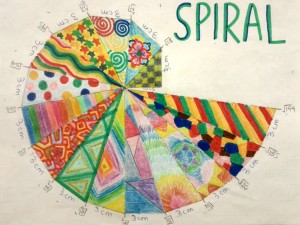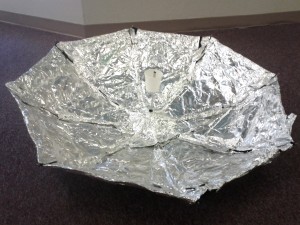Assessment Reflection
This post is a reflection on my strategies for assessment (Domain 4) for the American School Foundation of Monterrey Track 1 project.
Self-evaluation rubric
| DOMAIN 4: ASSESSMENT | Level |
|---|---|
| 4a. Using a variety of assessment strategies. | Meets Standard |
| I use multiple assessment tools including rubrics, projects and objective tests, and clearly communicate the criteria for success. | |
| 4b. Providing evidence of acquisition and meaningful application of essential knowledge. | Meets Standard |
| My assessment tools are designed to collect evidence of individual academic achievement as well as dispositions and skills, and I attempt to create meaningful applications through some activities. | |
| 4c. Designing assessments that reflect the ASFM curriculum document. | Meets Standard |
| My learning objectives and assessment strategies are aligned to each other and the curriculum, and my classroom assessments contain some higher order thinking skills. | |
| 4d. Providing feedback to students and parents. | Meets Standard |
| I assess each learning target enough to provide clear evidence, provide precise and timely feedback including grades through PowerSchool, and report to parents according to the school schedule. | |
| 4e. Assigning homework that reflects school policy. | Approaches Standard |
| I assign an appropriate amount of homework but rarely check it for completion or content so students may be unclear on expectations; I encourage agenda use. | |
Reflection
 Assessing student learning is at the centre of teaching but is really two distinct activities: summative assessment, or evaluating and reporting student learning at the end of a topic, unit or class; and formative assessment, or continually evaluating student learning and providing feedback to students in order to improve. I will discuss the two separately as I reflect on how I assess students.
Assessing student learning is at the centre of teaching but is really two distinct activities: summative assessment, or evaluating and reporting student learning at the end of a topic, unit or class; and formative assessment, or continually evaluating student learning and providing feedback to students in order to improve. I will discuss the two separately as I reflect on how I assess students.
Summative Assessment
The more obvious form of assessment, especially to students, is summative–it’s where the grades come from, after all. I follow a basic pattern for assessing each unit (see sample unit) based on the ASFM curriculum and the standards of the math department: one or two quizzes through the unit collectively worth 25% of the unit grade, a unit project worth 25% of the unit grade, and a unit test worth 50% of the unit grade. The exact balance of these changes slightly from unit to unit, but the basic pattern is consistent, giving students a stable framework to understand how their grade is being calculated, and to know what to focus on while studying and doing classwork.
Having a project (individual or group) and test (individual) for each unit also provided a variety of assessments while ensuring that each student had the great majority of their mark based on their individual work and growth rather than group work. I ensure to the best of my ability that my projects are meaningful applications of the students’ learning, incorporate real-world elements such as measuring, estimating, and modeling real-world geometrical situations, and encourage a creative element to allow students to incorporate their own interests or ideas into the project. The photos in this page are examples of student work from projects: the pythagorean spiral project (above), the stained glass pane project (below) and the parabolic dish project (bottom).
Having a unit project and test also ensures that I am aligning with the ASFM curriculum documents. The quiz and test mainly assess the large amount of procedural content knowledge required in a math course, and to some extent the deeper mathematical understanding of the student. They are very easily aligned to the course content as laid out in the class syllabus, as I explain in my reflection on planning. The project is a complex task that requires higher-level reasoning skills and creativity, ensuring that I am not assessing at only one level of thinking.
Although the unit quiz and test are counted as summative evaluations, they also serve formative purposes. The quiz helps students understand whether they are on track in understanding the unit, and the test does the same throughout the semester. I also look at both to inform my decision-making about how to teach the next content. For example, if there is a low class average on the quiz, I will revise the material before the test. A low class average on a test could lead to offering a re-test or test corrections.
The other significant summative evaluation I have used in my classes is a Review Presentation, done by a group of students before each unit test and again during review week before the final exam. The first presentation is formative, and I give detailed feedback to the group as to how to improve their presentation; the repeat presentation is a summative evaluation which assesses the groups’ skills at mathematical communication as well as their knowledge of their assigned unit. The review presentation also adds to the variety of assessments used in the course.
Formative Assessment
Probably the more important type of assessment done in the classroom, however, is formative. As a new teacher I am developing the ways in which I use formative assessments, and expect to expand and improve on these in the coming years. Currently, I collect formative data from department-wide tests such as our diagnostic tests and MAP tests, collect some data through Socrative, check homework, and as mentioned above use the unit quizzes in a formative role as well. However, most of the formative assessment I do is informal: moving around the class making mental notes about students’ progress, questioning students, and paying attention to student questions to determine areas of confusion.
The most direct way that I informally assess students learning, in order to determine if they have met the lesson objective and to improve my instruction, is during student practice time. As I mention in my reflection on instruction, during a lesson I will mix up examples in which I model correct procedure with examples in which I ask the students to practice and then model the procedure. During their practice time, I move around the classroom, looking over shoulders and asking (and answering) clarifying questions, getting a sense of whether they have reached an understanding of the content or not. I then make minor adjustments to the class determined by my observations: do I model another example on the board, do I ask the students to practice and demonstrate another example, or should we skip directly to practicing via homework? In my three Math 9 classes, which each had their own personalities and achievement levels, I would often end the lesson quite differently for each class.
 Although looking over my students shoulders is immensely valuable, it is not systematic and leaves a lot up to subjective interpretation, so I do collect some formative data to help inform my instruction and ensure my students are reaching their goals. I have been using the online tool Socrative, though irregularly, as an exit ticket. Students must answer three questions: do they feel that they understand the lesson, what did they learn, and to solve a sample math problem on the board. This gives me their subjective understanding of their learning as well as a more objective measure: did they correctly solve the problem on the board? I usually use the Prime Time Task at the start of a lesson to relate that lesson with one or more previous classes, thus getting a sense of whether they have understood that material. In Math 9, I collect their weekly PTT sheets as formative assessments. I also use regularly assigned homework for formative assessment purposes.
Although looking over my students shoulders is immensely valuable, it is not systematic and leaves a lot up to subjective interpretation, so I do collect some formative data to help inform my instruction and ensure my students are reaching their goals. I have been using the online tool Socrative, though irregularly, as an exit ticket. Students must answer three questions: do they feel that they understand the lesson, what did they learn, and to solve a sample math problem on the board. This gives me their subjective understanding of their learning as well as a more objective measure: did they correctly solve the problem on the board? I usually use the Prime Time Task at the start of a lesson to relate that lesson with one or more previous classes, thus getting a sense of whether they have understood that material. In Math 9, I collect their weekly PTT sheets as formative assessments. I also use regularly assigned homework for formative assessment purposes.
Homework is one area where I have a plan to improve for next year. I have been consistent in assigning an appropriate amount of homework, and it is well organized in the students’ notebooks. I also always set aside a few minutes in class for the students to check their homework for correctness and ask questions. However, I am less consistent in checking homework for completion. When I do check homework, I have often found that half the class or more has not completed their work, meaning they have not practiced and mastered the content from the previous lesson and are entering the current lesson at a deficit. This was an issue during my administrator’s observation and still comes up.
I have tried a few things regarding homework this year which seemed to have a positive impact. One of these is homework quizzes, which are used by my new partner teacher Matt in his Grade 9 honours course. Once a week or so, students enter class to a quiz where the questions are from the previous day’s homework. If they have finished the homework they can copy directly, but if not they will not have time to complete the quiz, thus providing an incentive for doing homework without always having to do a walkaround. With Matt’s help I plan to implement these regularly in my classes next year.
—
While I do have areas for improvement which I reflect on above, I feel that I meet the standard expected of ASFM for my assessments: I use a variety of summative assessment types which hit multiple levels of thinking, am clear in my expectations for students and align my summative assessments well with the ASFM curriculum. Formatively, I use some systematic and some informal methods to improve student learning and adjust my instruction.
